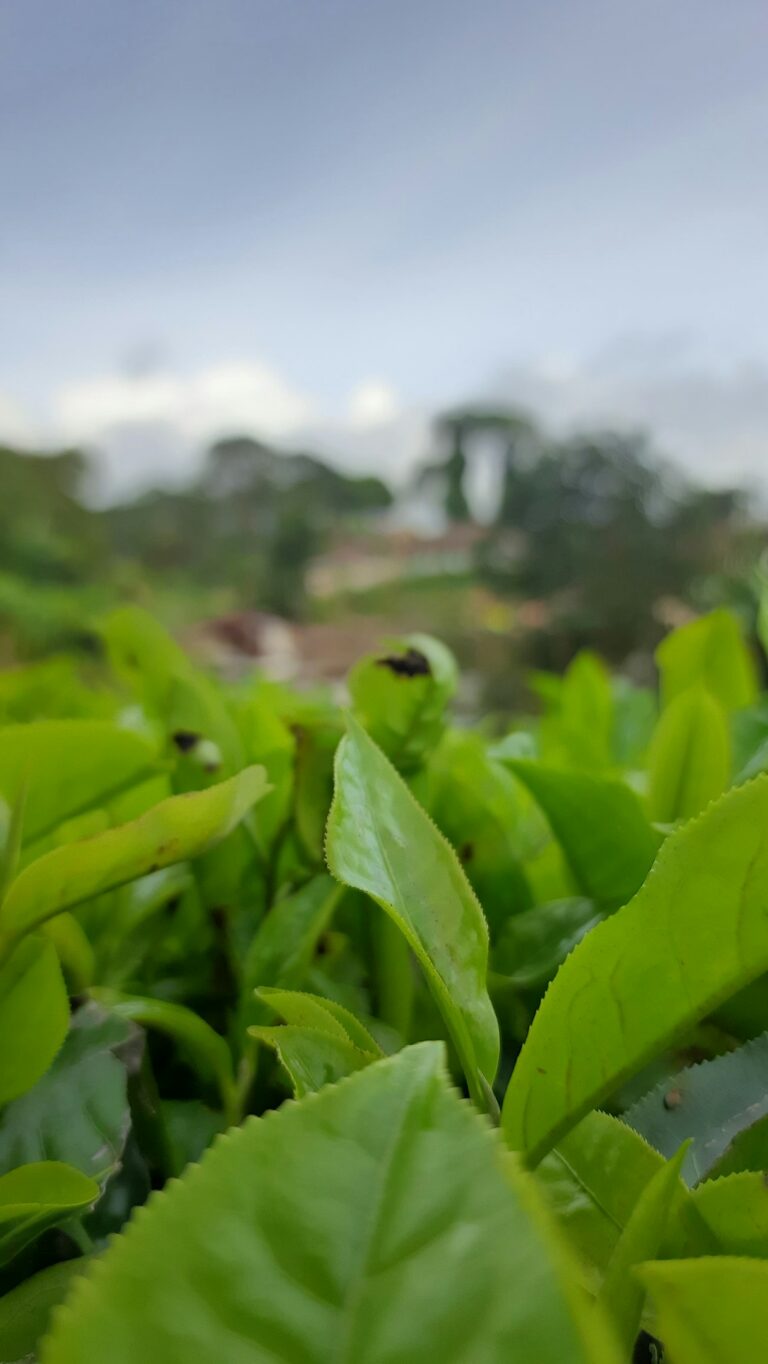Support our educational content for free when you purchase through links on our site. Learn more
How to Grow Green Tea in Your Garden – Expert Advice and Tips [2023]
Do you love the refreshing taste of green tea? Are you interested in growing your own green tea leaves right in your own garden? Well, you've come to the right place! At Growing Teas™, we're here to guide you through the process of growing your own green tea plants and enjoying your very own homegrown brew. In this comprehensive guide, we'll cover everything you need to know about how to grow green tea, from choosing the right variety to caring for your plants and harvesting the leaves. So grab a cup of tea and let's get started!
Contents
- Introduction
- Table of Contents
- Why Grow Green Tea?
- Choosing the Right Green Tea Variety
- Preparing the Soil
- Starting Green Tea Plants from Seeds or Cuttings
- Planting Your Green Tea
- Caring for Your Green Tea Plants
- Harvesting Your Green Tea Leaves
- FAQ
- Quick Tips and Facts
- Useful Links
- Reference Links
Introduction
Growing your own green tea can be a rewarding and fulfilling experience. Not only do you get to enjoy the freshness and flavor of homegrown tea, but you also have the satisfaction of knowing exactly where your tea leaves come from.
In this article, we will guide you through each step of the green tea growing process, from choosing the right variety for your garden to caring for your plants and finally harvesting the leaves. Whether you have a small backyard or a spacious garden, you can successfully grow green tea plants and enjoy the delight of brewing your own cup of tea.
Now, let's dive into the fascinating world of growing green tea!
Why Grow Green Tea?
There are several reasons why growing your own green tea plants can be a great idea:
- Freshness: By growing your own green tea, you can ensure that your tea leaves are as fresh as possible. The flavor and aroma of freshly picked tea leaves far surpass those of commercially produced teas that may have been sitting on the shelves for months or even years.
- Expense: Growing green tea at home can be a cost-effective way to enjoy your favorite beverage. Once the plants are established, you'll have an endless supply of tea leaves, eliminating the need to purchase store-bought tea regularly.
- Control over Quality: By growing your own green tea, you have full control over the cultivation process. You can choose organic and sustainable growing practices to ensure you're consuming a quality product without any harmful chemicals.
- Gardening Joy: If you enjoy gardening, growing green tea can add a new dimension to your gardening hobby. It's exciting to see the tea plants thrive and to witness the transformation of leaves into a flavorful beverage.
- Educational Experience: Growing green tea provides a fantastic opportunity to learn about the history, traditions, and cultural significance of tea. You can deepen your appreciation for this ancient beverage and gain a deeper understanding of its origins.
Choosing the Right Green Tea Variety
When it comes to growing green tea, choosing the right variety is crucial. Different varieties of green tea have specific preferences for climate, soil conditions, and overall growth characteristics. Here are a few popular green tea varieties suited for different regions:
| Green Tea Variety | Flavor Profile | Growing Difficulty | Recommended USDA Zones |
|---|---|---|---|
| Sencha | Fresh, grassy | Easy | 7-10 |
| Matcha | Rich, earthy | Intermediate | 6-9 |
| Gunpowder | Smoky, bold | Intermediate | 7-9 |
| Dragon Well | Nutty, sweet | Intermediate | 6-9 |
| Gyokuro | Sweet, savory | Advanced | 7-9 |
To ensure the best chances of success, choose a green tea variety that is well-suited to your local climate and gardening expertise. Take into account factors such as temperature, rainfall, and sunlight availability in your area.
Preparing the Soil
Green tea plants thrive in well-draining, slightly acidic soil with good water-retention capabilities. Before planting your green tea, prepare the soil to create the perfect growing conditions for your plants.
Soil pH and Nutrition
The ideal pH range for green tea plants is between 5.5 and 6.5. You can test your soil's pH using a soil testing kit, which is readily available at most gardening centers or online. If your soil pH is outside the ideal range, you can adjust it by adding soil amendments like sulfur for acidic soil or lime for alkaline soil.
Green tea plants also benefit from nutrient-rich soil. Incorporate organic matter, such as well-rotted compost or leaf mold, to improve soil fertility and structure. This will provide essential nutrients to support healthy growth and development of your tea plants.
Starting Green Tea Plants from Seeds or Cuttings
There are two primary methods for starting green tea plants: from seeds or from cuttings. Let's explore each option:
1. Seeds: Growing green tea from seeds can be a rewarding experience, but it requires patience and time. Here's how to do it:
- Purchase fresh, high-quality green tea seeds online or from a reputable supplier.
- Soak the seeds in room temperature water for 24 hours before planting.
- Fill pots or seed trays with well-draining potting mix.
- Plant the seeds shallowly, about 1/4 inch deep.
- Place the pots in a warm location with indirect sunlight, ideally between 68°F to 77°F (20°C to 25°C).
- Keep the soil consistently moist, but not waterlogged.
- Germination can take anywhere from 2 weeks to several months. Be patient and maintain the proper growing conditions.
2. Cuttings: Propagating green tea plants from cuttings is a faster method compared to growing from seeds. Here's what you need to do:
- Select healthy, disease-free stems from an existing green tea plant.
- Cut 4-6 inch (10-15 cm) stem sections just below a leaf node.
- Remove the lower leaves, leaving only a couple of leaves at the tip.
- Dip the cut end in a rooting hormone powder to promote root development.
- Plant the cutting in a pot filled with well-draining potting mix.
- Place the pot in a warm location with indirect sunlight.
- Keep the soil moist, but not overly wet.
- Roots should begin to develop within 4-8 weeks. Gently tug on the cutting to check if it has rooted.
Planting Your Green Tea
Once your green tea plants are ready, it's time to transplant them into your garden or containers. Here are some essential considerations for successful planting:
Sunlight Requirements
Green tea plants thrive in partial shade or dappled sunlight, particularly during the hottest parts of the day. Aim for about 3-4 hours of direct sunlight with filtered shade for the rest of the day. Morning sunlight and light afternoon shade are ideal for green tea plants.
Spacing
When planting multiple green tea plants, proper spacing is essential. Each plant needs sufficient space to grow and spread out its roots. Here's a general guideline for spacing:
- Potted Plants: If growing green tea in containers, allow 12-16 inches (30-40 cm) of space between each plant.
- In-Ground Planting: For in-ground planting, leave 36-48 inches (90-120 cm) of space between each plant.
Providing adequate spacing ensures good airflow between plants, reduces the risk of diseases, and promotes healthy growth.
Caring for Your Green Tea Plants
Taking care of your green tea plants is essential to ensure optimal growth and abundant leaf production. Let's explore the key aspects of caring for your tea plants:
Watering
Green tea plants require consistent moisture, but they don't tolerate waterlogged conditions. Here are some watering tips to keep in mind:
- Water deeply once or twice a week, depending on weather conditions and soil type.
- Aim for moist, not soggy, soil. Avoid allowing the soil to dry out completely between waterings.
- Consider using a drip irrigation system or a soaker hose to provide slow, deep watering directly to the root zone.
Fertilizing
Fertilizing your green tea plants helps provide the necessary nutrients for healthy growth and robust leaf production. Use an organic, slow-release fertilizer or a balanced water-soluble fertilizer formulated for acid-loving plants. Follow the manufacturer's instructions for the proper application rate.
Apply fertilizer in early spring, before new growth appears, and again in late spring or early summer. Avoid over-fertilization, as it can lead to excessive leaf growth at the expense of flavor.
Pruning
Pruning your green tea plants not only helps maintain their shape and size but also encourages new growth and enhances overall plant health. Here's how to prune your tea plants:
- Early Spring Pruning: In early spring, remove any dead, damaged, or diseased branches.
- Shape Pruning: Throughout the growing season, pinch back the tips of the branches to promote bushier growth. This will help create a more compact and attractive plant.
Pest and Disease Control
Green tea plants are generally resistant to many pests and diseases, but occasional issues may arise. Here are some common problems and their solutions:
- Pests: Monitor your plants regularly for pests like aphids, caterpillars, and mites. If an infestation occurs, use organic insecticidal soap or neem oil to control the pests.
- Diseases: Common diseases that can affect green tea plants include root rot and fungal infections. Proper watering practices, good air circulation, and avoiding overhead watering can help prevent these issues.
Harvesting Your Green Tea Leaves
Harvesting the leaves from your green tea plants is an exciting and rewarding moment. The quality and flavor of your homegrown tea depend on the timing and techniques used during the harvest. Here's what you need to know:
When to Harvest
The best time to harvest green tea leaves is when they are young and tender, typically during the spring and early summer months. Aim to harvest the leaves just before they reach their full size. This is when they contain the highest concentration of beneficial compounds, resulting in a superior flavor and aroma.
Harvesting Techniques
There are two primary harvesting techniques for green tea leaves:
-
Plucking Individual Leaves: This method involves carefully plucking the young leaves, one at a time. Hold the stem with one hand and use the other hand to pinch off the leaves, ensuring that you don't damage the remaining buds and leaves on the branch.
-
Plucking the Flush: For larger harvests, opt for the "flush" method. Pluck the topmost bud and 2-3 leaves together. This method is commonly used for larger-scale commercial tea production.
Regardless of the technique, handle the freshly harvested leaves gently to avoid bruising or crushing them. The leaves should be immediately used for brewing or processed further, depending on the desired tea type.
FAQ
What climate is needed to grow green tea?
Green tea plants thrive in regions with a temperate climate. They prefer moderate temperatures ranging from 65°F to 85°F (18°C to 29°C). The plants require a distinct change in seasons, including a period of cold dormancy during winter, to thrive and produce high-quality leaves.
How do I grow green tea in my garden?
To grow green tea in your garden, start by selecting a suitable green tea variety for your region and climate. Prepare the soil by ensuring good drainage and a slightly acidic pH. Plant your green tea either from seeds or cuttings, following the appropriate propagation method. Provide partial shade, proper spacing, and regular watering. Prune the plants as needed to maintain shape and remove any dead branches. Harvest the young leaves in the spring or early summer.
What zones can green tea grow in?
The recommended USDA hardiness zones for growing green tea vary depending on the variety:
- Sencha: Zones 7-10
- Matcha: Zones 6-9
- Gunpowder: Zones 7-9
- Dragon Well: Zones 6-9
- Gyokuro: Zones 7-9
Make sure to choose a variety suited to your specific USDA hardiness zone for the best results.
Quick Tips and Facts
- Green tea plants prefer partial shade and well-draining, slightly acidic soil.
- Regular watering is important for green tea plants, providing consistent moisture without overwatering.
- Prune your green tea plants to maintain their shape and promote new growth.
- Green tea leaves are best harvested when they are young and tender, just before reaching their full size.
- Different green tea varieties have different flavor profiles and growing requirements.
Useful Links
- Growing Teas™ Website
- Buy Green Tea Seeds on Amazon
- Drip Irrigation System on Amazon
- Organic Insecticidal Soap on Amazon
- Neem Oil on Amazon
Reference Links
- University of Maryland Extension – Growing Tea Plants
- American Camellia Society – Tea Growing
- Mississippi State University Extension – Green Tea Production
- World of Camellias – Green Tea
Happy tea growing, and may your garden be brimming with delicious green tea leaves!





